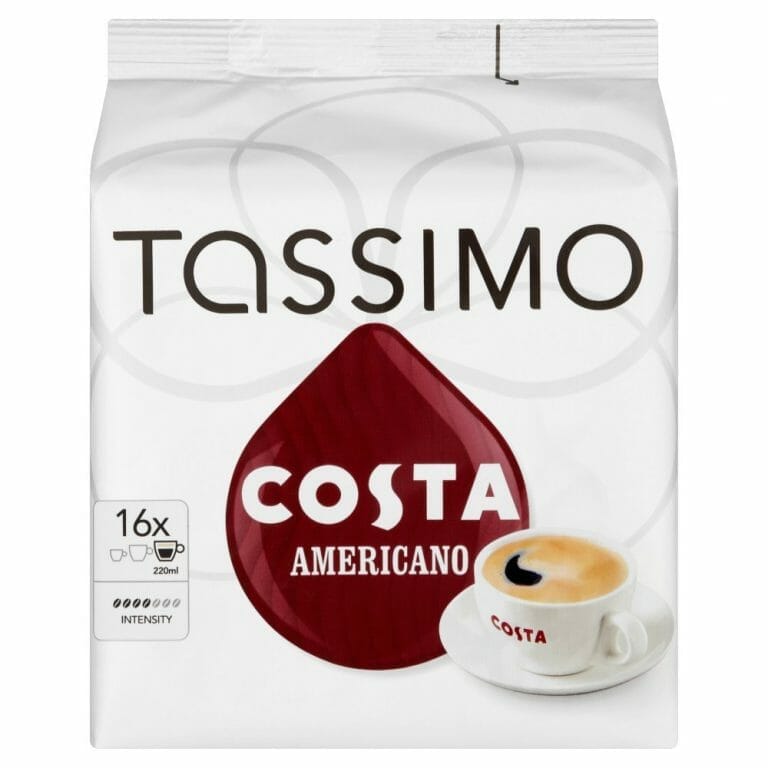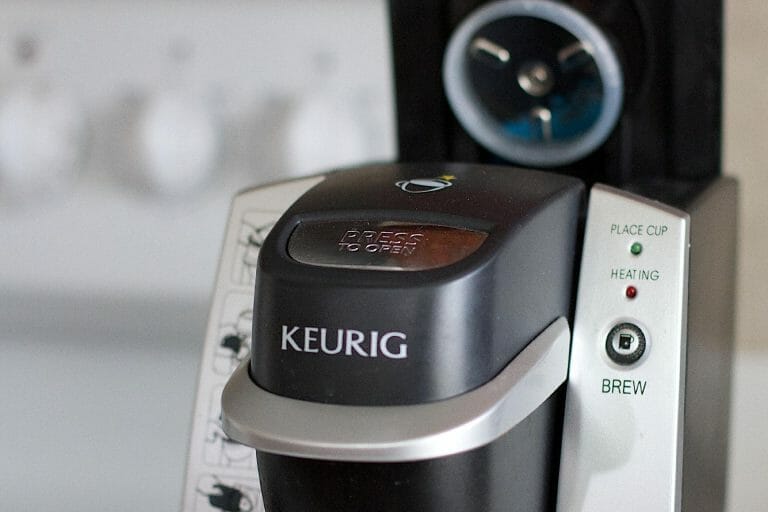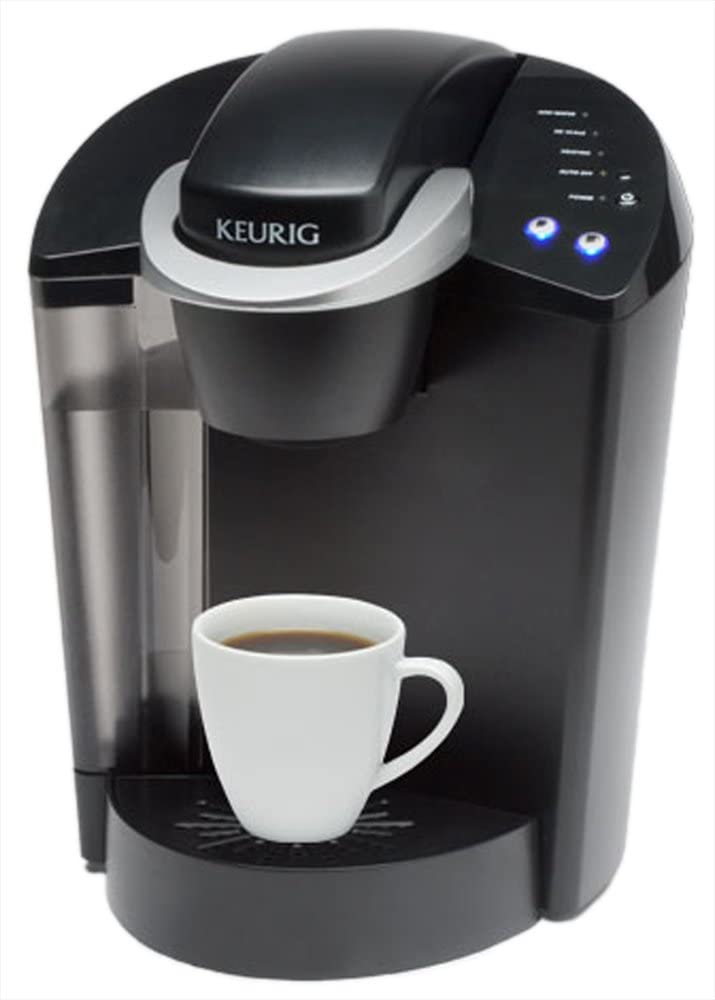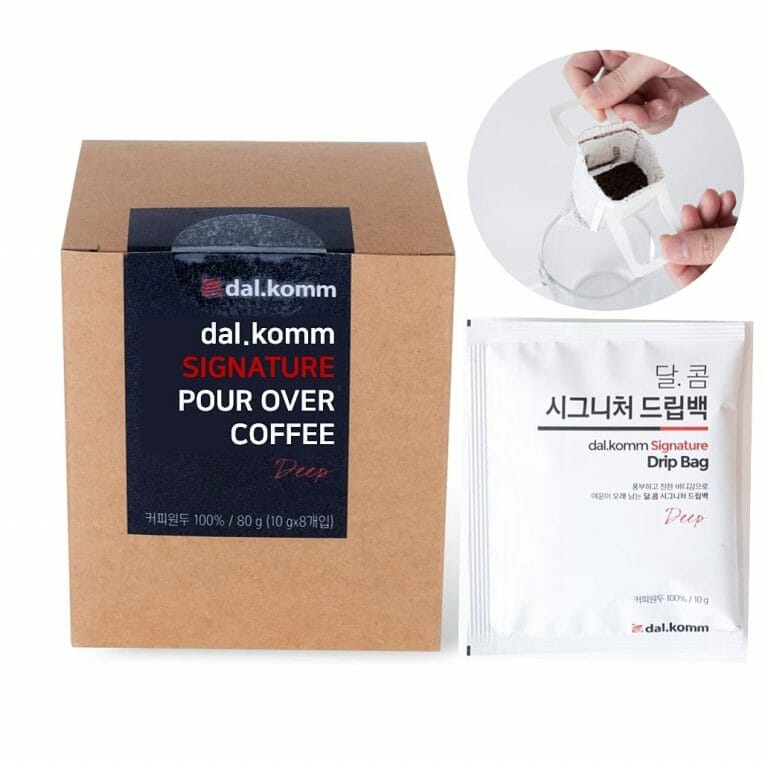Why Is Keurig Not Pumping Water: The Problems & Solutions

I’m often asked to share my expertise on the art of coffee making. In this article, I’m going to be discussing one of the most important elements of coffee-making: the choice of the right coffee bean, or “Var1”.
I’m going to explain why it matters so much and how you can make the best choice for your coffee-drinking needs.
I’m sure you’ll find this article both informative and helpful as you refine your coffee-making skills.
Why Keurig Is Not Pumping Water
I understand all too well the frustration of dealing with a Keurig that isn’t pumping water.
In this section, I will explain the most common causes of a Keurig not pumping water and provide some potential solutions.
With a bit of luck, and a few simple fixes, you should have your Keurig back up and running in no time.”
Water Line and Filter are Clogged
If your Keurig isn’t pumping water properly, the water line and filter may be clogged. This is a common problem and can easily be fixed.
Clogs are most often caused by a build-up of minerals and sediment in the water line, and can happen over time as the water is heated and evaporated.
To clean your water line and filter, you’ll need to start by unplugging the machine and disconnecting the water line.
Then, remove the filter, and rinse it with water to remove any sediment. After this, use a brush to scrub the inside of the water line, and use a cloth to wipe it down.
Once the water line and filter are clean, you can reassemble the machine and plug it back in.
Make sure the water line is securely connected to the machine, and that the filter is in place and firmly attached.
Then, run multiple cups of water through the machine to flush out any excess sediment.
If the problem persists after cleaning the water line and filter, you may need to bring in a technician to troubleshoot the issue.
Potential Air in Water Lines
Another common issue with Keurig machines not pumping water is air entering the water lines.
This can be caused by a few different things, but the most common cause is when the water tank is not filled correctly.
If the water level is too low, air can enter the lines and prevent water from being pumped. This can also happen if the Keurig has been unused for a long period of time.
It’s important to keep water in the tank at all times, and also to run the machine at least once a week if it won’t be used regularly.
This will help prevent air from entering the lines and causing the Keurig to not pump water.
If you find that the water lines have air in them, you should try to release the air from the lines to help the water flow again.
This can be done by running a few cycles of water through the machine, or by using a vacuum pump to remove the air.
Keurig Water Pump is Damaged”
If your Keurig isn’t pumping water, it could be a sign that the machine’s water pump is damaged. This can happen if the pump has been running for an extended period of time and it needs to be replaced.
The other potential problem could be a clogged filter, which can make it difficult for the pump to push the water through.
If you suspect that the pump is damaged, it’s important to have it checked out by a professional.
It’s also important to note that if you’re using a K-Cup, the water pump may be too weak to push the water through.
A weak pump may also be caused by a weak power supply, so it’s important to make sure that your Keurig is plugged into a strong wall outlet. If the issue persists, it’s likely that the pump needs to be replaced.
More Water Please” Error
The “More Water Please” error is a common issue with Keurig machines. It occurs when there’s not enough water in the machine to brew the desired cup of coffee.
This can be caused by a number of issues—from a clogged water filter to a malfunctioning pump. Whatever the cause, this error can be easily fixed with a few simple steps.
First, make sure the water reservoir is properly filled with fresh, cold water. If it is, check the water filter for any blockages.
If the filter is clogged, clean it with a damp cloth and then reinsert it into the machine.
Also, check the pump for any debris or build-up that might be preventing it from working properly. If so, clear away the debris and try again.
Finally, if the “More Water Please” error persists, it could be a sign of a larger problem with the Keurig machine.
This could be an issue with the thermostat, the heating element, or any other component of the machine. If this is the case, it’s best to contact a professional for help.
With these simple steps, you should be able to troubleshoot and fix the “More Water Please” error with your Keurig machine.
As always, be sure to follow the manufacturer’s instructions to ensure your machine is operating safely and correctly.
How To Fix Keurig Not Pumping Water
As a World Barista Champion, I know how important it is to have a properly functioning coffee machine.

When a Keurig isn’t pumping water, it can be incredibly frustrating. But don’t worry, I’m here to help! In this section, I’ll be guiding you through the necessary steps to get your Keurig up and running again.
With a few simple troubleshooting steps, you’ll be able to identify and fix the issue quickly and easily. So let’s get started!
Solution 1: Clear The Water Tank Exit
The first solution to try when your Keurig isn’t pumping water is to clear the water tank exit. This is the area where water exits the tank and flows into the coffee maker.
Over time, minerals, sediment, or other debris can build up in this area, blocking the flow of water and causing the Keurig to not pump water.
To fix this, unplug your Keurig and then carefully remove the water tank from the top of the machine.
Examine the area where the water exits the tank, and use a thin object, such as a thin straw, to clean away any build-up of sediment or debris. Once the area is clear, reattach the water tank and plug your Keurig back in.
If the problem is solved, then you can enjoy your coffee. However, if the problem persists, then you may need to try the next solution.
As a world barista champion, I recommend that you try this first, as it is the most effective and quickest solution to try.
Solution 2: Clear A Possible Air Lock
If the above solutions fail to resolve the issue of your Keurig not pumping water, the next solution to consider is to clear a possible air lock.
An air lock occurs when there is an air bubble trapped in the pump and water is not able to pass through.
This can be resolved by removing the water tank, then turning the Keurig on its side. This will allow the trapped air to escape from the pump, allowing the water to flow freely.
Once the Keurig is on its side, tilt the Keurig back and forth several times to help clear the air lock. This should help to restore water flow through the pump and resolve the issue.
If the air lock persists, you may want to consider descaling your machine or even replacing the pump. Regardless, these steps should help to get your Keurig back up and running in no time.
Solution 3: Descale To Remove Internal Water Flow Blocks
As an experienced barista, I understand how important it is to keep your Keurig clean and properly maintained.
One way to do this is to descale the machine in order to remove any blocks in the internal water flow.
This will ensure that the water can flow freely through the machine, resulting in a better cup of coffee.
Descaling is a simple process that involves using a descaling solution and running it through the machine.
This will help to break down any deposits that have built up inside the machine, allowing the water to flow more freely.
After the descaling solution has been run through the machine, it should then be flushed with plain water to remove any remaining residue.
Descaling your Keurig regularly will help to keep it in proper working order and will help to avoid any potential issues with the machine not pumping water.
It is also important to note that if the problem persists after descaling, then it may be necessary to replace certain parts of the machine.
Solution 4: Unclog The Needles
The fourth solution to fixing a Keurig not pumping water is to unclog the needles. If you find that the water is not flowing through your machine, it is likely that the water is being blocked by debris.
This debris can build up in the needle, preventing the water from entering the K-Cup. To unclog the needles, start by removing the K-Cup holder and then using a paperclip to carefully unclog the needle.
Be sure to do this gently as the needle is very delicate. Once the needle is cleared, replace the K-Cup holder and run a few cycles of water through the machine to flush out any remaining debris.
If the problem persists, it may be wise to replace the needle altogether. Taking this extra step will ensure that your Keurig is working properly and that you have the perfect cup of coffee every time.
Solution 5: Check The Water Magnet Alignment
When it comes to the Keurig not pumping water, the water magnet alignment could be a potential cause. This is a small magnetic coupling that connects the pump to the water reservoir.
If the magnet is not correctly aligned, the pump will not be able to draw water from the reservoir.
To check the water magnet alignment, first unplug the Keurig from the power source. Then, remove the top cover of the Keurig and locate the water pump.
The water magnet should be located at the bottom of the water pump. Make sure that it is correctly aligned with the water reservoir.
If the water magnet alignment is incorrect, carefully adjust it so that it is properly aligned. Once the alignment is correct, replace the top cover and plug the Keurig back in.
After this, the pump should be able to draw water from the reservoir and the Keurig should be operating normally.
What To Do If Your Keurig Continues Not Pumping Water?
If your Keurig is still not pumping water after following the troubleshooting steps outlined above, then it may be time to try a more drastic measure.
The first thing to do is to check the water filter and clean it, as a clogged filter can cause the machine to not pump water.

Make sure to replace the filter every three to six months. If that doesn’t work, then it may be time to clean the machine itself.
Unplug the Keurig and take it apart, then use a soft cloth and a mild detergent or vinegar solution to wipe away any buildup of scale or residue.
Once the machine has been thoroughly cleaned, reassemble it and try it again. If the Keurig still isn’t pumping water, then it may be time to call a professional.
Can You Run Vinegar Through A Keurig To Descale It?
Descaling a Keurig is an important part of its maintenance, as it helps to keep the machine running smoothly.
The process of descaling involves removing mineral deposits from the internal components of the machine, which can build up over time and cause problems with the functioning of the machine.
The good news is that you can use vinegar to descale a Keurig. Vinegar is an effective descaler, and can help to remove mineral buildup from the machine’s components.
To descale a Keurig with vinegar, simply fill the water reservoir with a mixture of equal parts water and white vinegar, then run the machine as if you were making a cup of coffee.
Once the cycle is complete, discard the vinegar mixture and rinse the reservoir with clean water. Repeat the process a few times, and your Keurig should be descaled.
It is important to note that descaling with vinegar should only be done with a Keurig that is not under warranty, as vinegar can cause damage to the machine that may not be covered by the warranty.
Additionally, it is not recommended to use vinegar as a descaler more than once every two months. Doing so may cause damage to the machine, or may not be effective.
What Does It Mean to Prime a Keurig?
Priming a Keurig is an essential step in getting it up and running correctly. Priming a Keurig is the process of running water through the coffee maker before use.
This helps to ensure that the machine is able to produce coffee correctly, and also helps to remove any air bubbles that may be in the system.
Priming a Keurig is a simple process. All you need to do is fill the water reservoir with cold water and press the “Brew” button.
This will cause the water to run through the machine and out the spout. This process should be repeated several times until the water runs clear and without bubbles.
Once this is done, your Keurig is ready to go and you can start brewing your favorite cup of coffee.
Priming a Keurig is important because it ensures that the machine is able to produce the best quality coffee possible.
Additionally, it helps to prevent any damage to the machine caused by air bubbles.
It is also important to prime a Keurig when it is first purchased, as this helps to ensure that the machine is working properly.
Why Has My Keurig Slowed Down?
If your Keurig is pumping water at a slower rate than usual, then there could be a few different issues at play.
The most common cause is an accumulation of mineral deposits in the brewing chamber, which can impede water flow. If this is the case, you can perform regular descaling to address the issue.
Another possible cause of a slow pump is a clogged needle, which is the small hole at the bottom of the K-Cup holder.
If this is the case, you can clean the needle using a paperclip or a special cleaning tool.
Finally, it’s possible that the pump itself is failing. If this is the case, you’ll need to have it serviced or replaced by a professional.
No matter the cause, if you suspect that your Keurig is slow because of a mechanical issue, it’s best to contact customer service and have a professional take a look.
How Long Do Keurig Pumps Last?
The lifespan of a Keurig pump will vary depending on how frequently it is used and how well it is maintained. On average, a Keurig pump can last anywhere from six months to two years before needing to be replaced.
However, if you take the time to properly care for your machine and regularly maintain it, then you can expect your pump to last for a much longer period of time.
To keep your Keurig pump functioning optimally, it is important to always ensure that the water reservoir is topped off with fresh water and to never leave the machine idle for too long.
Additionally, it is important to regularly descale the machine and to replace the filter regularly.
This will help to ensure that your pump is free of any mineral buildup or other debris that could potentially cause blockages or other issues.
Conclusion On Why Is Keurig Not Pumping Water: The Problems & Solutions
After reviewing the various problems that could cause a Keurig machine to not pump water, I can safely conclude that the most common issue is a clogged water line.
This can be remedied by running a descaling solution through the machine and/or cleaning the water reservoir as needed.
Additionally, checking the pump, float switch, and water inlet valve can also help to identify and resolve any other underlying issues.
Overall, with a bit of troubleshooting and the right solutions, most Keurig problems can be quickly resolved.






